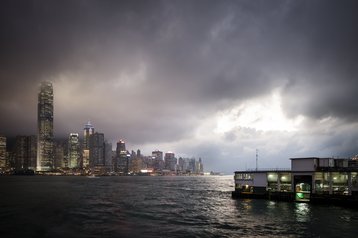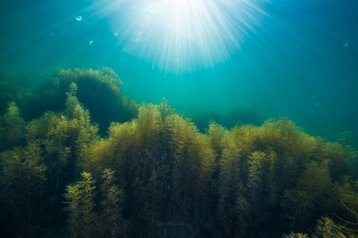As climate change gathers pace, extreme weather events are on the rise, and so are sea levels. Critical infrastructure, including data centers and submarine cable landing stations, are expected to work reliably, yet they are at risk of water ingress and flooding.
Flooding and water ingress can happen during major storms, but water can be a nuisance in regular weather conditions, and leaks can reduce the reliability or performance of a facility. There are ways to limit water ingress, which can greatly reduce those risks.
Around half of data centers experience outages according to the Uptime Institute, and the Ponemon Institute reckons the average outage costs more than $700,000.
Most failures are caused by problems with the uninterruptible power supply (UPS) or human error, but weather related events, and general water incursion figure high on Ponemon’s surveys, and their incidence is expected to increase.
It comes
In 2012, Hurricane Sandy caused extensive damage in New York: Several data centers in lower Manhattan went down, and had to pump out basements and generator rooms, and then replace damaged switchgear before they could go live again. In 2016, the river Aire in Leeds, UK burst its banks and floods reached a Vodafone facility, taking it down for several days.
Location is the best defense against natural disasters. Site selection already considers factors as environment, climate, power, fiber connectivity, labor costs and taxes. It should also assess the risk of natural disasters, and avoid areas prone to floods.
There are industry standards to help guide site selection. For example, TIA 942, an American National Standard (ANS) for data center reliability, includes guidelines for protection against physical hazards, including fire, flood and wind. TIA 942 suggests that Tier IV data centers should be located more than 300ft (91m) from the 100 year flood plain and more than half a mile (0.8km) from coastal or inland waterways.
Areas prone to natural disasters can be identified from historical data for tornadoes, hurricanes, earthquakes, and flooding, available from agencies such as FEMA, USGS, NOAA, the European Commission and the European Environmental Agency.
Site specific factors such as elevation, slope, and water table should also be considered, even outside the flood area. ANSI/BICSI 002 – 2014 provides recommendations here.
Sometimes decisions taken to reduce other risks can actually increase dangers from floodwater. For instance, electrical and network links can be placed underground to avoid damage to overhead lines. If the water table rises, these ducts and entries can be at risk.
ANSI/BICSI 002 recommends that utility ducts should be above the water table and utility maintenance holes should be examined as a potential source of water ingress.
Even moderate rainfall can get into fiber and power distribution ducts and fill underground vaults. This causes instant problems such as short circuits, but water also causes longer term problems. Pumping it out is a nuisance, and high humidity levels can make switchgear fail, causing partial discharge and bushing failures. Moisture will degrade the insulation system, and cause corrosion. Humidity in the presence of other contaminants can also increase partial discharge.
Duct designs should be sloped to direct water away from buildings and equipment, and vaults should be located above the water table, but moisture can still get into vaults or ducts leading by generators, switchgear, load banks and transformers.
Get ready
In the long term, moisture can cause “water treeing,” where insulation degradation propagates in the form of micro-cracks, and can eventually lead to cable failure. Water treeing starts at stress points on the cables, caused during manufacturing, transportation, pulling or service.
The risk can be reduced with cables that are optimized for these environments (e.g. TR-XLPE or LC), but not all cable failures are due to a breakdown in cable insulation. Splices, terminations and joints are also a potential weak link where poor workmanship can lead to water ingress.
As well as power cables, many of the same considerations apply to underground fiber optic cables. Water molecules embedded in micro-cracks can cause signal attenuation, connectors can corrode, and freezing can cause mechanical damage.
Outdoor cables use gel-filled tubes or water-swellable materials to minimize water penetration and survive harsh environments but, as with power cables, the connections can be the weakest link. Preventing water ingress and minimizing moisture are the best ways to protect critical fiber optic infrastructure.
What about the future? Climate change could potentially be the biggest threat to infrastructure. In the UK, increased flooding is expected to damage key assets including masts, pylons, data centers, telephone exchanges, base stations and switching centers, according to a report by AEA for DEFRA, the UK’s Department of Environment, Food and Rural Affairs.
In the US, the Third National Climate Assessment, from the US Global Change Research Program reports similar risks.
Over the past century, global average sea level has risen by eight inches, and it is expected to rise by one to four feet in the rest of this century, raising the risk of erosion, storm surge damage, and flooding for coastal communities. In the US, nearly 490 communities will face chronic inundation by the end of the century, including large cities such as Boston, New York, Miami, San Mateo and Newark. Data centers in these cities will be at risk of flooding.
A nearer-term paper, Lights Out: Climate Change Risk to Internet Infrastructure, predicts that by 2030, with a 1ft rise in sea level, 235 data centers will be affected, as well as 771 POPs, 53 landing stations, and 42 Internet Exchange Points (IXPs).
Under a modest projection, 4,067 miles of fiber conduit will be under water by the end of the century. This is infrastructure which is designed to be weather and water resistant, but it is not designed to be submerged,and some of this infrastructure is already 20 years old, and already at risk of seals and cladding deteriorating.
For the data center, other danger areas include cable and pipe penetrations in the rooftop, power systems located outside the exterior wall, or connections to an exterior network room. All penetrations through the building envelope should be treated as a potential leak path and sealed appropriately (see box).
New data centers can be built outside of coastal areas but, even here, large storms have increased in certain areas by as much as 71 percent. For every one degree Celsius increase in climate, there is seven percent more moisture in the air. Based on the predicted global temperature rise of three to five degrees, heavy downpours could become even more frequent in the future, causing localized flooding and changing flood boundaries.
Despite the warnings, in a recent survey of 867 data center operators and IT practitioners, only 14 percent reported they were taking climate change into consideration and “re-valuating site selection based on higher temperatures, increased flooding, or water scarcity.” Only 11 percent are taking steps to mitigate increased flood risk.
These are low numbers, but they do show that the threat of climate change and flooding is starting to be recognized. Future data centers must protect against the threat of water, and it seems that some operators are already doing it proactively.
Jason Hood is global segment manager infrastructure at Roxtec International
This feature appeared in the April issue of DCD Magazine. Subscribe for free today:


